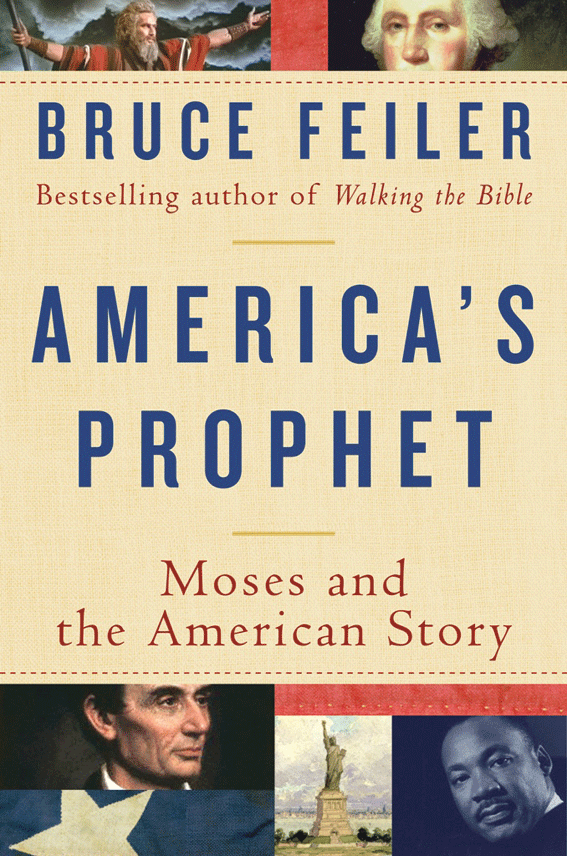(Editor’s note: Many AJW readers were surprised to see Ruth F. Brin’s book review on the front page of the newspaper last week. Unfortunately, Ruth, our book critic for more than a dozen years, did not live to see her review in print; she passed away on the morning of Sept. 30. She was by far the most accomplished Jewish writer in Minnesota, and a delightful presence in our community. Her sparkling and profound poetry graces the siddurim of the Conservative, Reform and Reconstructionist movements. As her grandson, Shai Ingber, noted at her funeral last week at Adath Jeshurun Congregation, Ruth will always be with us, as far as her legacy of beautiful words that appear in our prayer books — and in other volumes of poetry, liturgies, Torah commentary, etc. And Ruth will live on in the memories and the hearts of her friends and family members.)
Reviewed by RUTH F. BRIN
Bruce Feiler writes: “For centuries, European explorers had set out for new lands without using expressions like pharaoh and promised land, New Covenant, New Israel, Exodus and Moses. By choosing these evocative lyrics, the founders of America introduced the themes of oppression and redemption, anticipation and disenchantment, freedom and law, that would carry through four hundred years of American history. Because of them, the story of Moses became the story of America.”
 Feiler’s book is a stunning account of how the idea of Moses as leader, through his liberation of his people, his problems and his giving of the law, became a foundation concept in the history of the United States. Feiler’s book traces why this story has so much power. As he has done in his previous books, particularly Walking the Bible and Abraham, Feiler visits many sites of American history where the ideas of liberation and a new kind of society, after many struggles, echo the story of the Exodus. He discovers that even Columbus, in spite of the fact that the Bible wasn’t familiar to the common person in his time, wrote about himself as a Moses.
Feiler’s book is a stunning account of how the idea of Moses as leader, through his liberation of his people, his problems and his giving of the law, became a foundation concept in the history of the United States. Feiler’s book traces why this story has so much power. As he has done in his previous books, particularly Walking the Bible and Abraham, Feiler visits many sites of American history where the ideas of liberation and a new kind of society, after many struggles, echo the story of the Exodus. He discovers that even Columbus, in spite of the fact that the Bible wasn’t familiar to the common person in his time, wrote about himself as a Moses.
But the author’s first research trips, where he can see and talk to people who understand the history, are to Plymouth, Mass., and the beginning of the New England colonies. We learn that the first landing was not at Plymouth Rock but on Clark’s Island. Throughout this book, American history not only comes alive, but fascinating new details crop up.
Feiler shows us how the pilgrims thought of themselves as a new people of Israel, fleeing the oppression of church and state in Europe and coming to America to build a new idealistic law-abiding society in this promised land.
The author’s research is impressive. He shows us that Moses’ words in Deuteronomy 30 were quoted by the pilgrim leader John Winthrop, in 1630, and by Martin Luther King Jr. on the night before he was killed in 1968, and by many people in between, even by Ronald Reagan at the Statue of Liberty centennial celebration. This speech by Moses from Mt. Nebo begins: “ I have set before you this day life and good, death and adversity” — a speech as well known to Gentiles as it is to Jews.
I enjoyed the author’s repetition of the picture of George Washington as Moses, very popular during his lifetime. Even Tom Paine, the radical revolutionary who wrote a “rabble-rousing” pamphlet called “ Common Sense” during the American revolution, quoted Deuteronomy. Feiler shows how the Moses story underlies the thinking of many of the signers of the Declaration of Independence.
Feiler also traces the curious story of the Liberty Bell and how it became another symbol of the United States related to the Moses saga. He writes of the power of the Masonic movement and, again, its adoption of Moses as an inspiring figure.
There is a wonderful account of how the black slaves took Christian teachings and made the story of the Exodus their own, not only in spirituals but in the Underground Railroad. Harriet Tubman, who courageously led many slaves to freedom, was called “the Moses of her people.” Abolitionists were inspired by the story in Exodus, as was Harriet Beecher Stowe in Uncle Tom’s Cabin.
America’s Prophet includes an account of the movies of Cecil D. DeMille, especially The Ten Commandments. Did you know that metal plaques of the Ten Commandments were erected in parks, courthouse grounds and in front of state capitols as publicity for the movie? Such public displays have spawned quite a few legal cases over the years, and the controversy about where to draw the dividing line between church and state continues.
Feiler writes in an easy style, with occasional humor. America’s Prophet is a great look at American history and does leave the reader thinking again of just what is important in American society.
(American Jewish World, 10.2.09)



















